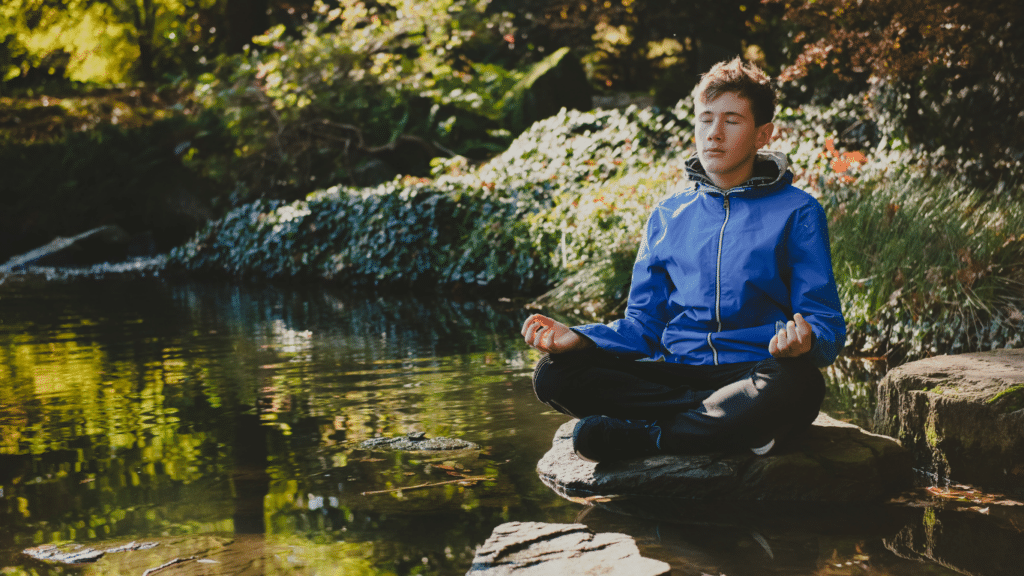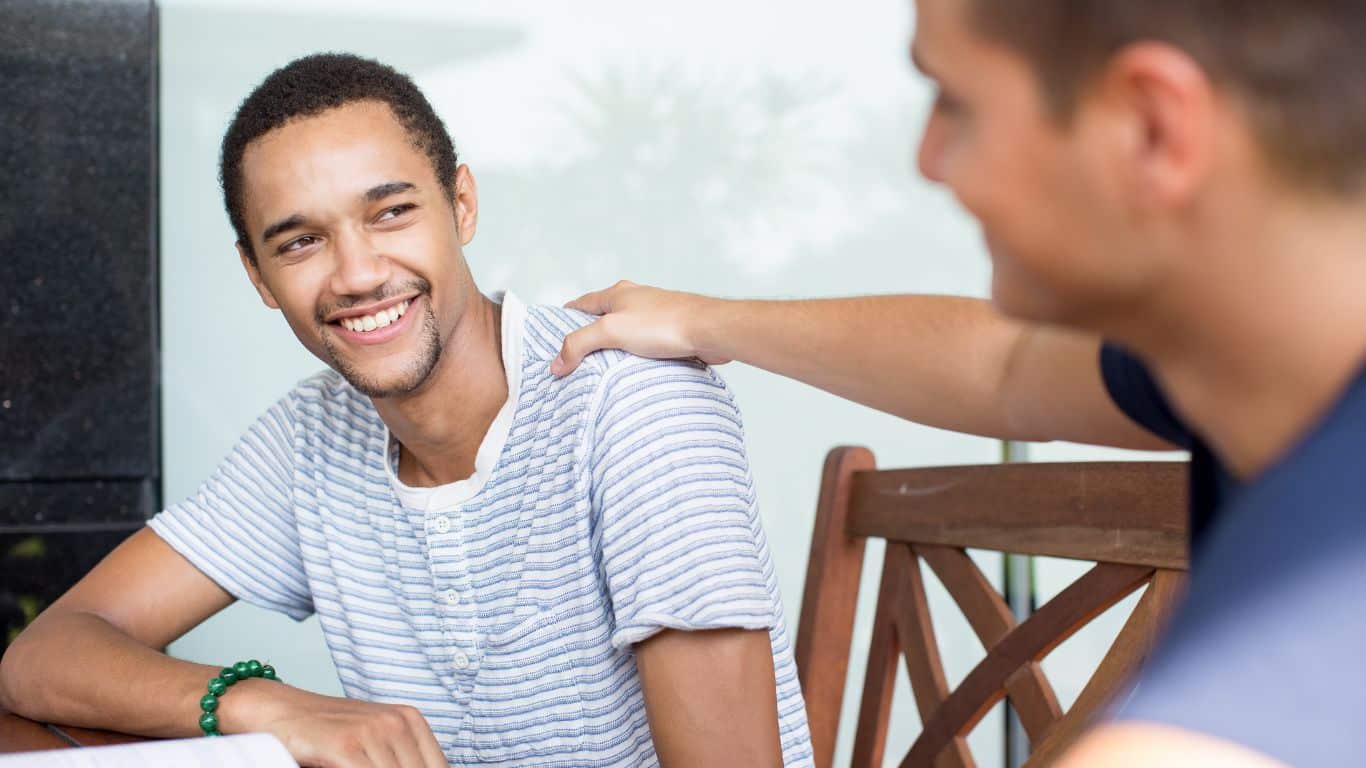Why mindfulness?
Mindfulness has become a buzzword that’s as likely to be heard in the business world as in a yoga studio, but what is it? Simply put, mindfulness is a type of meditation that focuses on being present in the moment without judgement, regardless of what is happening. Mindfulness meditation comes from Buddhist teachings but can be practiced by anyone.
Teens and youth often feel pulled in different directions by competing priorities and interests. In addition to the regular concerns of figuring out who they are and where they are headed in life, young people who have been fostered and/or adopted often struggle with the effects of trauma. Research has shown that practicing mindfulness can help youth in many ways, including:
- better focus and concentration,
- an increased sense of calm,
- decreased stress and anxiety,
- improved impulse control,
- increased self-awareness,
- skillful responses to difficult emotions,
- increased empathy and understanding of others,
- development of natural conflict resolution skills, and
- a host of physical health benefits.
What is mindfulness?
Mindfuness meditation involves intentionally focusing on something for a set period of time. Often the focus will be on the breath; other times it could be on sounds or sensations. Classes that teach mindfulness meditation are one way to learn tools and develop a strong practice. Mindfulness can also be practiced in a less formal way by bringing awareness to everyday life, as in the examples in the next section.
It’s best to begin practicing mindfulness for short periods of time when you’re relaxed. Gradually increase the time you practice. If you feel restless when you try to practice mindfulness, don’t try to force yourself to feel calm or blame yourself for doing it ‘wrong’. Just acknowledge and accept that you feel restless, and continue your practice.
Mindfulness isn’t about being calm at all times, or thinking about nothing, or pretending to be happy when you’re not. It’s about developing your attention to and awareness of what’s happening in and around you. In this way you can learn to self-regulate and shift your attention.
As you develop your mindfulness muscles you’ll be able to face challenging situations more skillfully.
Simple ways to incorporate mindfulness into your family life
Today’s families often rush back and forth to school, work, sports or music practice, groceries, medical appointments, and so on. If the idea of trying to add a mindfulness class to your weekly routine stresses you out, try one of these simple ways of practicing mindfulness whenever you have a quiet moment with your teen or youth. Many of then can even be done while you’re driving, riding the bus, or sitting around the dinner table.
Nature Walk
Recent research shows that being in nature reduces stress, depression and aggression, improves mood, increases the ability to focus (including in children with ADHD), and enhances creativity and overall health. Take advantage of these health benefits by practicing mindfulness on a nature walk. Notice how walking on a forest path or beach feels on your feet, see how many different bird calls you can hear, or pause to smell the leaves or needles of different trees.
Intentional breathing
Take three slow, smooth breaths. This simple act relaxes your body and helps you feel more calm. Intentional breathing can be particularly helpful before having difficult conversations. Try it the next time you have to break some bad news or have a conversation about expectations or an upcoming change with your young person. During the conversation you can also take breathing breaks from time to time, especially if things get heated. The goal is not to shut down emotional responses, but to take a moment to recognize and acknowledge them.
Gratitude
Developing a family habit of sharing something you’re thankful for only takes a few minutes each day. It’s also a great way to connect with each other. Be clear that even the smallest thing is worthy of gratitude. Some days that’s all you’ve got! You might be surprised by what your young person shares. Over time, a gratitude practice retrains the brain to notice joy and pleasure instead of focusing on the negative. Practicing gratitude has been found to have a wide range of emotional, social, and health benefits, including increased resilience and decreased depression, stress, and risk of suicide.
5-4-3-2-1
When your young person experiences anxiety, stress, or experiencing other intense emotions, try the 5-4-3-2-1 exercise with them. It’s a quick and simple technique that engages all the senses. Ask them to tell you five things they can see, four things they can touch, three things they can hear, two things they can smell, and one thing they can taste. You can answer too, if you want. You can walk around to find answers to the questions or you can just imagine the feel, sound, taste, scent, or taste of things you like. This exercise disrupts anxious thought patterns and gets you both back into the present. The 5-4-3-2-1 exercise is also a great tool your teen our youth can use alone once they get used to it.
Ring a bell
Another easy practice is to keep a bell somewhere in your house that anyone can ring if they are feeling unsettled, overwhelmed, or in need of a moment of quiet. When the bell is rung, everyone present should stop what they are doing and enjoy a moment of mindfulness by taking three slow, smooth breaths. Afterwards, they can return to what they were doing or take some time to reach out and connect with one another.
Arran Liddel is the Director of Spiritual Exploration and Learning for Children and Youth at First Unitarian Church of Victoria and offers secular mindfulness classes for youth in Victoria. Since arriving in Canada from Scotland he has lived in Vancouver, Montreal and Toronto and is now loving Island life. He and his partner are hoping to adopt from foster care soon.






